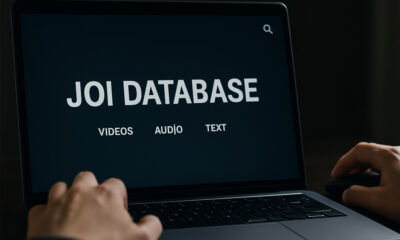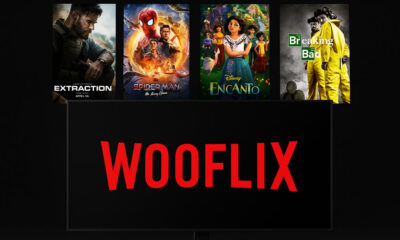Every time a new technology arrives, it brings a familiar question: is this the end of human creativity?
When calculators appeared, people thought they’d make mathematicians irrelevant. When Photoshop launched, some worried it would replace designers. Now, with the rise of the AI ad creation tool, copywriters are having their turn in the spotlight.
So, will the best AI ad generator take over creative writing altogether? Or will it become a creative partner that helps writers work faster and think bigger? Let’s unpack the fear, the facts, and the future.
Why the Fear Exists
The anxiety isn’t totally unfounded. AI tools have already proven they can write and they can do it fast.
They can generate headlines, slogans, product descriptions, and even long-form copy in seconds. For quick-turn automated ad design, AI seems unbeatable.
And as AI in marketing becomes mainstream, many brands are starting to wonder if they still need human writers at all.
It’s an understandable concern. AI never sleeps, doesn’t charge hourly rates, and doesn’t get creative blocks. But what it delivers in speed, it often lacks in soul.
Where AI Excels
Let’s give credit where it’s due: AI ad generators are remarkably good at certain things.
- Speed
AI can generate hundreds of taglines or ad variations in seconds. That kind of efficiency is invaluable for large-scale campaigns or last-minute marketing pushes.
- Data-driven relevance
AI isn’t just fast, it’s analytical. By processing performance data, it tailors ad copy to different audience segments with incredible precision. It knows what works, what doesn’t, and how to tweak words for better engagement.
- Variation testing
Because AI can instantly produce multiple versions of a headline or caption, it makes A/B testing effortless. Marketers can quickly identify which message drives more clicks, conversions, or curiosity.
For instance, Persado, an AI copywriting platform, claims its machine-generated email subject lines outperform human-written ones by up to 49 percent.
That’s not just impressive, it’s proof that AI can analyze and execute faster than humans ever could.
Where Humans Still Rule
But speed isn’t everything. Marketing isn’t just about who clicks, it’s about who connects.
AI might win on efficiency, but humans win on empathy. The best copywriters know how to weave emotion, humor, and cultural nuance into their work. They understand that a single well-chosen word can make someone feel seen, understood, and inspired.
AI doesn’t feel emotions, which means it struggles to write copy that makes readers feel them. It can mimic tone, but it can’t truly understand context.
Consider The New York Times subscription campaign, which used clever, human-driven storytelling to position journalism as a vital public service. Could AI have written that with the same cultural sharpness and emotional depth? Probably not.
Great copywriting isn’t just about stringing words together. It’s about rhythm, timing, and the subtle art of persuasion. It’s knowing when to make someone laugh, when to tug at their heartstrings, and when to make them act.
Until AI learns to feel, it will always need humans to give its words meaning.
The Future: Collaboration, Not Replacement
Instead of asking, “Will AI replace copywriters?” it’s smarter to ask, “How can AI help copywriters do their best work?”
AI isn’t here to take pens out of writers’ hands. It’s here to sharpen those pens.
Here’s how the collaboration works best:
- AI as a brainstorming partner
Writers can use AI ad creation tools to generate quick drafts, headline ideas, or concept directions. It’s like having an assistant who throws out dozens of ideas like some brilliant, some bad but always enough to spark new thinking.
- Humans bring the voice and vision
Once AI provides the raw material, human writers refine it. They add personality, wit, and emotional flow. They make it sound human because they are human.
- AI takes care of the repetitive stuff
Writers spend less time tweaking word counts or formatting ad variations and more time on the fun part, crafting narratives and shaping brand strategy.
Together, humans and AI create copy that’s both scalable and soulful. The machines handle the mechanics. The humans handle the magic.
The Real Future of Copywriting
The writers who thrive in this new landscape will be the ones who embrace AI in marketing, not fear it. They’ll know how to use the best AI ad generator to speed up routine tasks while keeping their creative fingerprints all over the final product.
AI isn’t a creative rival, it’s a creative amplifier. It can help writers test ideas, analyze performance, and refine tone at lightning speed. But the spark that makes a line unforgettable still comes from the human brain.
Think of it this way: AI is the rhythm section, keeping things fast and consistent. Writers are the lead singers, giving the performance its soul. Without both, the music doesn’t hit the same.
Conclusion
So, will AI ad generators replace copywriters? Not a chance.
What they will do is make them more powerful, more efficient, and more strategic. The best copywriters will learn to work with AI tools, not against them, using data to inform creativity instead of limiting it.
In the end, the AI ad creation tool isn’t here to eliminate writers. It’s here to elevate them. Human creativity paired with AI precision is the future of storytelling.
The writers who adapt will find themselves not replaced, but amplified. Because even in the age of automation, words still need a heartbeat and that’s something only humans can provide.

 Celebrity6 months ago
Celebrity6 months ago
 Entertainment5 months ago
Entertainment5 months ago
 Celebrity3 months ago
Celebrity3 months ago
 Entertainment5 months ago
Entertainment5 months ago
















